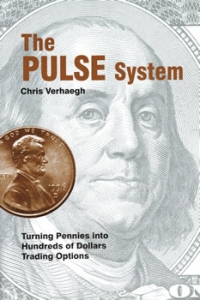.jpg)
Follow
Us:    
|
Special Training
by Chuck Hughes
8-Time Winner of Int’l Live
Trading Championship
Today I’m going to teach you, in detail, how you can add a reliable passive income stream to your life...
Without buying or subscribing to anything!
Automatic 6-Figure Income
In 3 Easy Steps
Thousands of men & women have paid $2,997 or more to learn the trading secrets I’m going to share with you in this FREE webinar!
Space is limited Register Now!
Next, join Avant-Garde Trading with guest host Rob Roy for a FREE educational webinar happening TODAY, May 3rd at 3:30pm CDT. Rob is the Co-Founder and Chief Market Strategist for OptionAxiom, LLC.
Listen in as Rob details his approach on the markets and provides you with educational insights.
Registration is FREE, and you still have time to sign up!
Reserve Your Spot!

|

Chris’s father immigrated to the US when he was quite young and worked to help support his 9 siblings during the depression. So, he never went to high school. Wanting better for their son, he and his wife were grateful when Chris’s genius for math (at age 14 he wrote and sold a logic puzzle to Dell Crosswords) earned him a scholarship to a prestigious prep school in LA. That’s where it all began…
- Wrote more than 100 weekly columns for OptionInvestor.com.
- Conducted seminars and workshops for Investools and has been a frequent speaker at Investor Conferences and Money Shows.
- On Business Advisory Board at Northwest Nazarene University.
- Consultant for a European Investment Bank where he taught technical analysis to their fund managers, advised their proprietary trade desk, and helped trade over $2 Billion.
- At the request of homeschool advocate Rhea Perry, created a course to teach families how to trade options for a living (sold over $1 m in courses to the homeschool community).
 |
The PULSE System Manual
& Quick Start DVD
Everything You Need To Turn $100-Bills Into $1,000 Paydays

“I think a lot of people run scared when you start talking about Delta and Gamma and all that. But Chris makes it simple. He tells stories and that makes it very interesting.”
Diego V., Contractor in Agoura Hills, CA
- Become familiar with how Options work… how they’re priced… and how they’re traded.
- Learn all about my proprietary PULSE method for finding Weekly options offering the highest possible rewards and the lowest possible risk.
- Discover how you can achieve the greatest profits and the most winning trades with each PULSE strategy.
- Build the ultimate foundation for success… and gain the ability to do what hardly anybody else can do... Turn $100-Bills into $1,000 Paydays.
And that, my friend, is how you double your money 20 times in 20 days… I guarantee it!
Learn More About
The PULSE System
|
|

Better
Business Bureau
 |
|
Click on authors name
to learn more
|
| |
|
|
This week we feature Chris Verhaegh. Chris talks about how market saturation and empathy present trading opportunities.
Lee Gettess provides the next segment with his regular video newsletter explaining his market expectations for the coming week.
Then, Todd “Bubba” Horwitz lays out the rules to follow when trading a long ratio backspread.
Last, Chuck Hughes offers his Guaranteed Real Optioneering Winners - Optioneering Newsletter.
Enjoy!
Adrienne LaVigne
TradeWins Publishing
 |
|
Event Trading: Empathy & Market Saturation
by
Chris Verhaegh
The following
is an excerpt from Chris Verhaegh's The PULSE System
Empathy
This is an interesting phenomenon. Many times we’ll see a news announcement pertaining to one particular company and the stock will move dramatically. It could be bad news, like a lawsuit or a scandal. Or on the positive side, it could be an Earnings report. When that happens, many times we’ll see other stocks in the same industry move in empathy with that stock! The moves for the other companies won’t be as dramatic, but they will be in the same direction.
Precious metals are an excellent example of this. There are several stocks, indexes and ETFs related to precious metals. When one moves, the others are likely to follow shortly after. Especially with Gold and Silver. They’re like Siamese twins. When one goes, the other will too.
FAS and FAZ is a great pair to pay attention to if you’re looking for empathy moves. These are 3X multiplier ETFs of the banking sector. FAS is a Bull multiplier and FAX is a Bear multiplier. FAS rises when the banking sector rises (Bullish). FAZ rises when the banking sector falls (Bearish). We like trading FAS and FAZ for a couple of different reasons. First, they can never go to zero. Well, theoretically, they could, but if the entire banking industry drops to zero, we’ve got bigger problems than figuring out which options to be trading! Secondly, since they are ETFs, they have no Earnings releases of their own, but they both react to the Earnings releases of banking stocks like JP Morgan (JPM), Bank of America (BAC), or Wells Fargo (WFC).
When a large banking company has an Earnings release, the options for that stock are going to be expensive. The options on FAS and FAZ will not be priced with the same Expected Volatility, but will move in empathy with the banking stock. That’s where we cash in!
Market Saturation
Some events aren’t quite as obvious to the novice trader. One of those not-so-obvious events is Market Saturation. Stock growth doesn’t just happen because a company is performing well. There are many factors that affect stock growth. One of those factors is Market Saturation. Actually, I have a name for my personal Market Saturation indicator. I call it the “Nowhere else to grow – Boise Idaho” Indicator. My theory is - if a company has grown to the point that they’re opening stores in my hometown of Boise, there’s nowhere left to go!
About a decade ago, the Wall Street darling at the time was Krispy Kreme Doughnuts (KKD). Since there weren’t any Krispy Kreme outlets in Idaho, people would have to travel over four hours to the northern suburbs of Salt Lake City, Utah to get their doughnut fix.
Empathy & Market Saturation
|
Lee
Gettess' Market Sense
by Lee Gettess
Lee
Gettess is a top trader who is excited
to bring you his video newsletter.
Each week, Lee will share his predictions
on what he anticipates from the bond
and S&P markets.
Watch
Video
|
Long Ratio Backspreads
by Todd Horwitz
The following
is an excerpt from Todd "Bubba" Horwitz's Treasure Trove of Insider Secrets
Long Ratio Backspreads allow a trader to take an outright long or short position in the market without buying a put or call, outright. In some cases, the ratio will allow the trader to do a spread that will limit risk without limiting reward for a credit. The size of the contracts used and strike differential will determine if the spread can be done for a credit, or if it will be a debit. The closer the strike prices are the less market risk, but the greater the premium risk.
The Call Ratio Backspread is a bullish strategy. Expect the stock to make a large move higher. Purchase calls and sell fewer calls at a lower strike, usually in a ratio of 1 x 2 or 2 x 3. The lower strike short calls finance the purchase of the greater number of long calls and the position is usually entered into for no cost or a net credit. The stock has to make a large enough move for the gain in the long calls to overcome the loss in the short calls because the maximum loss is at the long strike at expiration. Because the stock needs to make a large move higher for the back-spread to make a profit, use as long a time to expiration as possible.
Rules for Trading Long Option Ratio Backspread
A long Backspread involves selling (short) at or in-the-money options and buying (long) a greater number of out-of-the-money options of the same type. The option that is sold should have higher implied volatility than the option bought. This is called volatility skew. The trade should be made with a credit. That is, the amount of money collected on the short options should be greater than the cost of the long options. These conditions are easiest to meet when volatility is low and strike price of the long option is near the stock price.
Risk is the difference in strikes X number of short options minus the credit. The risk is limited and maximum at the strike of the long options.
The trade itself is great in all trading environments, especially when trying to pick tops or bottoms in any stock, commodity or future.
Long Ratio Backspreads
|
Guaranteed Real Optioneering Winners
by Chuck Hughes
The following is an excerpt from Chuck Hughes' Optioneering Newsletter
Every week Chuck publishes his “Optioneering Newsletter”. The following is a trade opportunity taken from his most recent issue.
The first profit opportunity we will consider this week is in URTY. URTY is the ProShares UltraPro Russell 2000 ETF. URTY seeks to achieve daily results that are 300% of the performance of the Russell 2000 Small Cap Index.
The monthly chart shows that URTY has been extremely bullish since last year’s low. URTY hit a new record high on Wednesday. New record highs are bullish. The daily chart shows that URTY posted an upside breakout this week. The next target is 140.
URTY is a leveraged ETF. While leveraged ETFs contain more risk, they usually possess higher premiums as a result. We suggest taking advantage of the high premiums offered by initiating call debit spreads.
Traders who want a more leveraged approach could consider buying URTY calls. URTY has options expiring in May, June, August, and November. Click Here to follow this trade.
To Learn More Click Here
|
|